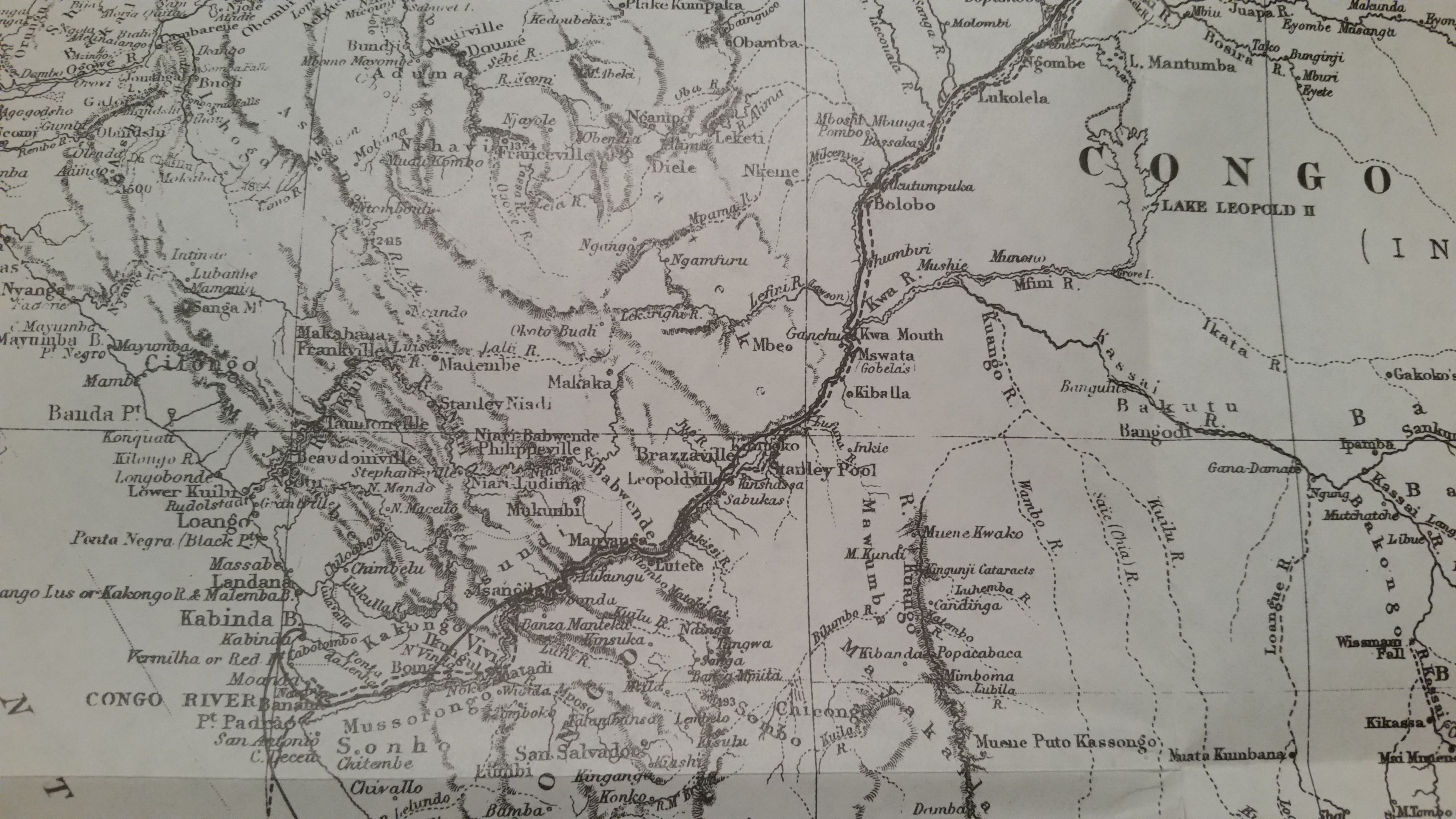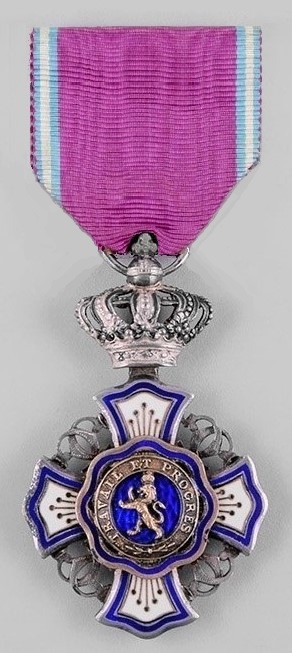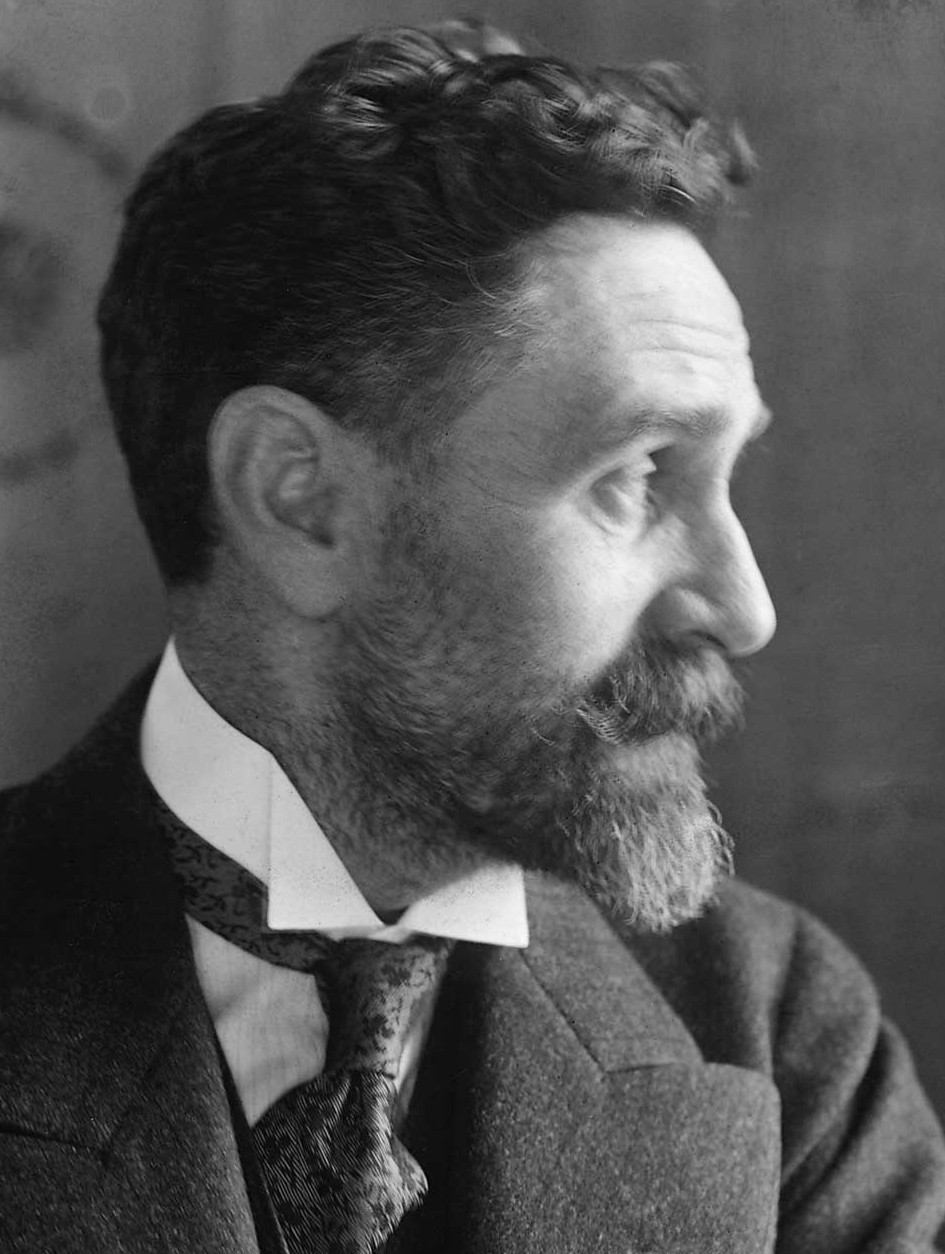|
Paul Costermans
Paul-Marie-Adolphe Costermans (2 April 1860 – 9 March 1905) was a Belgian soldier and colonial civil servant. After a brief career in the Belgian Army, Costermans enlisted for service in the military of the Congo Free State, the ''Force Publique'', in 1890 and later served in the colony's administration. During several periods of service in the colony, Costermans rose through the ranks. Between 1904 and his death in 1905, he held the position of Vice Governor-General of the Congo. Career A native of Brussels, Costermans attended the Royal Military Academy and was commissioned a sub-lieutenant of artillery in the Belgian Army on 13 December 1880. He joined the armed forces of the Congo, the ''Force Publique'', as a lieutenant on 3 October 1890, and embarked for the Congo the same day at Vlissingen. He arrived in Boma on 2 November... After a brief posting elsewhere, Costermans was appointed district commissioner of Stanley Pool (Léopoldville), where he arrived on 26 May 1891 ... [...More Info...] [...Related Items...] OR: [Wikipedia] [Google] [Baidu] |
Brussels
Brussels (french: Bruxelles or ; nl, Brussel ), officially the Brussels-Capital Region (All text and all but one graphic show the English name as Brussels-Capital Region.) (french: link=no, Région de Bruxelles-Capitale; nl, link=no, Brussels Hoofdstedelijk Gewest), is a region of Belgium comprising 19 municipalities, including the City of Brussels, which is the capital of Belgium. The Brussels-Capital Region is located in the central portion of the country and is a part of both the French Community of Belgium and the Flemish Community, but is separate from the Flemish Region (within which it forms an enclave) and the Walloon Region. Brussels is the most densely populated region in Belgium, and although it has the highest GDP per capita, it has the lowest available income per household. The Brussels Region covers , a relatively small area compared to the two other regions, and has a population of over 1.2 million. The five times larger metropolitan area of Brusse ... [...More Info...] [...Related Items...] OR: [Wikipedia] [Google] [Baidu] |
Kasai River
The Kasai River ( ; called Cassai in Angola) is a tributary (left side) of the Congo River, located in Central Africa. The river begins in central Angola and flows to the east until it reaches the border between Angola and the Democratic Republic of the Congo, where it turns north and serves as the border until it flows into the DRC. From Ilebo, between the confluences with Lulua river and Sankuru river, the Kasai river turns to a westerly direction. The lower stretch of the river from the confluence with Fimi river, is known as the Kwa(h) River, before it joins the Congo at Kwamouth northeast of Kinshasa. The Kasai basin consists mainly of equatorial rainforest areas, which provide an agricultural land in a region noted for its infertile, sandy soil. It is a tributary of Congo river and diamonds are found in it. Around 60% of diamonds in Belgium go from Kasai river for cutting and shaping. Exploration Henry Morton Stanley reached the confluence on 9 March 1877, calling the rive ... [...More Info...] [...Related Items...] OR: [Wikipedia] [Google] [Baidu] |
Order Of The African Star
The Order of the African Star ( nl, Orde van de Afrikaanse Ster; french: Ordre de l'Étoile africaine) was established by Leopold II of Belgium on 30 December 1888, in his capacity as ruler of the Congo Free State, and was awarded for services to Congo and for the "promotion of African civilisation in general". It was incorporated into the Belgian honours system on 10 October 1908 following the annexation of the Congo Free State by Belgium. The motto of the Order is "''Travail et progrès''" (french: Labour and progress, link=no; nl, Arbeid en vooruitgang, link=no). The King of the Belgians is its Grand Master; although the Congo is no longer a Belgian colony, it is still considered to be a Belgian Order by tradition. The Order of the African Star is theoretically awarded by royal decree with approval by the Council of Ministers. Following the independence of Congo in 1960, the Order of the African Star is no longer awarded, although it officially still exists. Classes The Or ... [...More Info...] [...Related Items...] OR: [Wikipedia] [Google] [Baidu] |
Royal Order Of The Lion
The Royal Order of the Lion (french: Ordre Royal du Lion; nl, Koninklijke orde van de Leeuw) was established by King Leopold II of Belgium on 9 April 1891, in his capacity as ruler of the Congo Free State, and was awarded for services to the Congo and its ruler that did not deserve the award of the Order of the African Star, and were not necessarily performed from within Belgian Congo. The order was incorporated into the Belgian honours system following the annexation of the Congo Free State by Belgium in 1908. The motto of the order is ''Travail et progrès'' ("Labour and progress"). The King of the Belgians is its Grand Master, with the order awarded by Royal Decree. Following the independence of Congo-Léopoldville in 1960, the order is no longer current, although the wording of its statutes permitted awards after this, for example for services rendered before independence. Classes The Royal Order of the Lion has five classes and three medals: * Grand Cross, who wear ... [...More Info...] [...Related Items...] OR: [Wikipedia] [Google] [Baidu] |
Order Of Leopold (Belgium)
The Order of Leopold ( nl, Leopoldsorde, french: Ordre de Léopold, ) is one of the three current Belgian national honorary orders of knighthood. It is the oldest and highest order of Belgium and is named in honour of its founder, King Leopold I. It consists of a military, a maritime and a civil division. The maritime division is only awarded to personnel of the merchant navy, and the military division to military personnel. The decoration was established on 11 July 1832 and is awarded by Royal order. History When Belgium became independent of the Netherlands, there was an urgent need to create a national honour system that could serve as a diplomatic gift. The national congress provided this exclusive right to the sovereign, this military honour system was written in Article 76. The first King of the Belgians, Leopold I of Belgium, used his constitutional right in a larger way than foreseen: not only military merit, but every service in honour of the Kingdom. Two years ... [...More Info...] [...Related Items...] OR: [Wikipedia] [Google] [Baidu] |
National Redoubt (Belgium)
The National Redoubt (french: Réduit national, nl, Stelling van Antwerpen) was a strategic defensive belt of fortifications built in Belgium. The National redoubt was the infrastructural cornerstone of Belgian defensive strategy from 1890–1940. The following fortifications and defensive constructions were an integral part of the National redoubt: * the Fortified Position of Liège (Luik) with a number of forts * the Fortified Position of Namur (Namen) with a number of forts * Fort Eben-Emael * the K-W line: a "canal" from Koningshooikt to Wavre, to defend against tank incursions * another anti-tank canal in the Kempen, roughly aligned with the outer ring of fortifications around Antwerpen * the coastal defenses as a retreat position against invasion troops The most important part of the national redoubt was a double ring of defensive forts around the city and port of Antwerp. The National Redoubt was a -long belt of fortifications built from 1859 to 1914, as the stronges ... [...More Info...] [...Related Items...] OR: [Wikipedia] [Google] [Baidu] |
Casement Report
The Casement Report was a 1904 document written by Roger Casement (1864–1916)—a diplomat and Irish independence fighter—detailing abuses in the Congo Free State which was under the private ownership of King Leopold II of Belgium. This report was instrumental in Leopold finally relinquishing his private holdings in Africa. Leopold had held ownership of the Congolese state since 1885, granted to him by the Berlin Conference, in which he exploited its natural resources (mostly rubber) for his own private wealth. Background Stokes Affair Through intercepted letters, Captain Hubert-Joseph Lothaire, the commander of the Congo Free State forces in the Ituri-campaign, learned that Charles Stokes (born in Dublin) was on his way from German East Africa to sell weapons to the Zanzibari slavers in the eastern Congo region. Stokes was arrested and taken to Captain Lothaire in Lindi, who immediately formed a Drumhead court-martial. Stokes was found guilty of selling guns, gunpowd ... [...More Info...] [...Related Items...] OR: [Wikipedia] [Google] [Baidu] |
Félix Fuchs
Félix Alexandre Fuchs (1858–1928) was a Belgian colonial civil servant and lawyer who served as Governor-General of the Belgian Congo between 1912 and 1915. A lawyer by profession, Fuchs joined the administration of the Congo Free State in 1888 as a jurist and quickly rose through the ranks. Considered a Liberal, Fuchs's civilian background and attitudes distinguished him from the majority of colonial administrators who had begun their careers in the military. Rising to the highest ranks of the administration in the late 1890s, Fuchs eventually became Governor-General after the Congo's annexation by Belgium and presided over the Congo's entry into World War I. Career Fuchs was born into a family of Prussian origin in Ixelles, Brussels in Belgium on 25 January 1858. He was naturalised as a Belgian citizen in 1862 and, in 1876, went to study Law at the Free University of Brussels. He later practiced as a lawyer at the court of appeal in Brussels. In 1887, Fuchs began wo ... [...More Info...] [...Related Items...] OR: [Wikipedia] [Google] [Baidu] |
Ruzizi River
The Ruzizi (also sometimes spelled Rusizi) is a river, long, that flows from Lake Kivu to Lake Tanganyika in Central Africa, descending from about to about above sea level over its length. The steepest gradients occur over the first , where hydroelectric dams have been built. Further downstream, the Ruzizi Plain, the floor of the Western Rift Valley, has gentle hills, and the river flows into Lake Tanganyika through a delta, with one or two small channels splitting off from the main channel. The Ruzizi is a young river, formed about 10,000 years ago when volcanism associated with continental rifting created the Virunga Mountains. The mountains blocked Lake Kivu's former outlet to the drainage basin of the Nile and instead forced the lake overflow south down the Ruzizi and the drainage basin of the Congo. Course Along its upstream reaches, the river forms part of the border between Rwanda on the east with the Democratic Republic of the Congo (DRC) on the west. Further downstr ... [...More Info...] [...Related Items...] OR: [Wikipedia] [Google] [Baidu] |
Zambezi
The Zambezi River (also spelled Zambeze and Zambesi) is the fourth-longest river in Africa, the longest east-flowing river in Africa and the largest flowing into the Indian Ocean from Africa. Its drainage basin covers , slightly less than half of the Nile's. The river rises in Zambia and flows through eastern Angola, along the north-eastern border of Namibia and the northern border of Botswana, then along the border between Zambia and Zimbabwe to Mozambique, where it crosses the country to empty into the Indian Ocean. The Zambezi's most noted feature is Victoria Falls. Its other falls include the Chavuma Falls at the border between Zambia and Angola, and Ngonye Falls near Sioma in western Zambia. The two main sources of hydroelectric power on the river are the Kariba Dam, which provides power to Zambia and Zimbabwe, and the Cahora Bassa Dam in Mozambique, which provides power to Mozambique and South Africa. Additionally, two smaller power stations are along the Zambezi Riv ... [...More Info...] [...Related Items...] OR: [Wikipedia] [Google] [Baidu] |
Portuguese East Africa
Portuguese Mozambique ( pt, Moçambique) or Portuguese East Africa (''África Oriental Portuguesa'') were the common terms by which Mozambique was designated during the period in which it was a Portuguese colony. Portuguese Mozambique originally constituted a string of Portuguese possessions along the south-east African coast, and later became a unified colony, which now forms the Republic of Mozambique. Portuguese trading settlements—and later, colonies—were formed along the coast and into the Zambezi basin from 1498 when Vasco da Gama first reached the Mozambican coast. Lourenço Marques explored the area that is now Maputo Bay in 1544. The Portuguese increased efforts for occupying the interior of the colony after the Scramble for Africa, and secured political control over most of its territory in 1918, facing the resistance of Africans during the process. Some territories in Mozambique were handed over in the late 19th century for rule by chartered companies like the Moz ... [...More Info...] [...Related Items...] OR: [Wikipedia] [Google] [Baidu] |
Chinde
Chinde is a town of Mozambique, and a port for the Zambezi valley. It is located on the Chinde River, and is an important fishing center. It exports copra and sugar, and had a population of 16,500 in 1980. Chinde lies in Chinde District of Zambezia Province. History The small town of Chinde, located approximately 40 miles south of Quelimane, developed as the main point of entry for passengers and goods for the British Central Africa Protectorate which was proclaimed in 1891. Because of its favourable location on the Chinde River, part of the Zambezi River delta, it had potential for growth, and superseded both Quelimane and Conceição as the most suitable port of entry . Until the third quarter of the 19th century, Quelimane, which was linked to the Zambezi river by a shallow channel, was the main port giving access to Central Africa. The Congress of Berlin in 1884 established free navigation of the Zambezi and its tributary rivers, and a number of British missionaries and trade ... [...More Info...] [...Related Items...] OR: [Wikipedia] [Google] [Baidu] |




